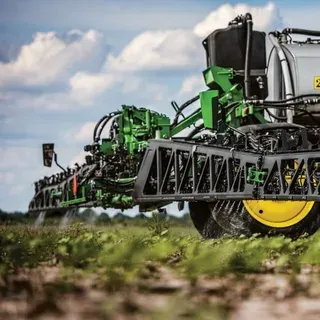Understanding Artificial Intelligence: What It Is and How It Is Used in Agriculture
Technology in agriculture has increased in complexity in recent years. With the growing use of precision farming, data-driven decision-making, and advanced analytics using machine learning algorithms and other artificial intelligence (AI) technologies, farmers can now collect and analyze vast amounts of data about their crops, including weather patterns, soil health, and plant growth. With the help of AI to optimize farming practices, farmers can improve their crop yields, reduce waste, and increase profitability. Accurate and timely data can make the difference between a successful or unsuccessful crop cycle, making it crucial for farmers to leverage technology and data to their advantage. The primary goal of this article is to provide background knowledge and terms that frequently come up in other articles about AI as well as in general use. The target audiences of this series include the general public, Extension educators, and farmers who want to know more about AI systems and their applications. This series will help readers understand the opportunities that AI brings to agriculture as smart technologies continue to grow in the market.
Subfields of Artificial Intelligence Based on Techniques
AI is a computer software that simulates human intelligence such as memory, reasoning, and decision-making processes (Feldman 2001). AI can be achieved using various techniques. This section is dedicated to categorizing different types of systems based on fundamental AI techniques: expert system, heuristic search, machine learning, and deep learning (Figure 1).

Credit: Daeun Choi, UF/IFAS
Expert System
These programs capture the knowledge of skilled experts in the form of specific rules (Liao and Shu-Hsien 2005), represented mainly as “if-then” rules, in a software system that can be used by others (Figure 2).
Example in Agriculture
Decision support systems for crop management such as irrigation scheduling based on soil moisture would fall into the category of expert systems. “If the soil moisture level is below 41%, then turn on the water pump.”
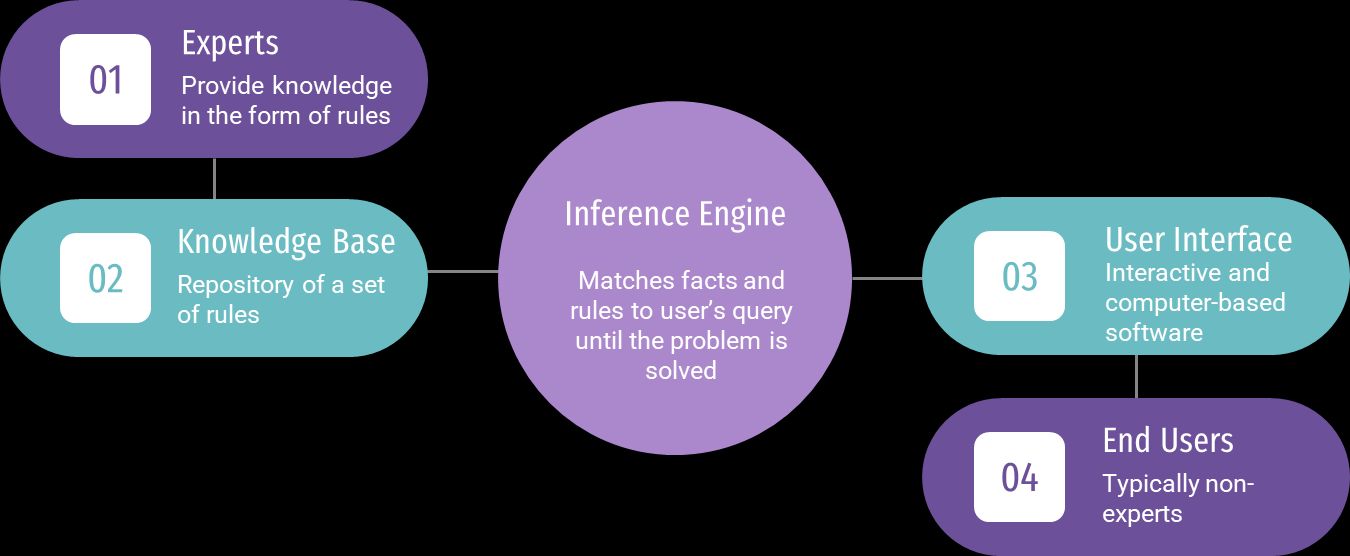
Credit: Daeun Choi, UF/IFAS
Heuristic Search
Heuristic search is a type of search meant to find an optimal solution for a problem (Edelkamp and Schrodl 2011). For example, information is stored as a long string of 0s and 1s. The AI algorithm searches for all possible combinations of these numbers to identify the best solution.
Example in Agriculture
An example of heuristic search would be optimization systems for agricultural planning by simulating all possible scenarios. “Determine the optimal number of harvesting machines needed for a certain field in order to minimize the total cost.”
Machine Learning
Machine learning algorithms imitate the human learning process of “learning by example” (Mitchell et al. 1997). Computers or machines can be trained by being exposed to curated and structured sample data repetitively (i.e., training process) to find general patterns using statistical and computational algorithms. Data pre-processing (cleaning and defining characteristics of data) by programmers is typically required in machine learning.
Example in Agriculture
A crop price forecasting system would be an example of machine learning. “Applied economics using machine learning techniques can be used to understand price fluctuations and risk management measures to numerous variables such as climate, government policies, and market demand.”
Deep Learning
Deep learning, a subset of machine learning, uses a specific technique called neural networks to identify patterns in data. Deep learning adds more complexity to the traditional neural network to simulate how the human brain works, therefore eliminating some of the data pre-processing involved with traditional machine learning (LeCun et al. 2015). Many recent deep learning algorithms use vast amounts of data due to their complexity in technical structure.
Example in Agriculture
An example of deep learning would be a dynamic decision support system for autonomous driving of agricultural equipment. “Adaptive driving strategy for interacting with human workers in the field, other equipment, and moving obstacles.”
Subfields of Artificial Intelligence Based on Applicational Domains
There are many AI applications in our daily lives. AI subfields can be categorized based on their application use. The most common subfields among them are computer vision, natural language processing, robotics, and autonomous vehicles (Figure 3). For each subfield, any of the AI techniques (expert system, heuristic search, machine learning, or deep learning) can be chosen based on the complexity of tasks.

Credit: Daeun Choi, UF/IFAS
Computer Vision (CV)
CV enables machines to see the nearby environment by analyzing visual information using various types of cameras (color, near-infrared, multispectral, thermal, etc.). CV techniques are developed to replicate human perception, but CV is not limited by visible light. Some CV systems, such as those found in airport security that can see through objects, can see beyond the visible light spectrum.
Example in Agriculture
An example of computer vision would be image recognition for weed, plant, and crop detection, and land cover classification. A commercial example is John Deere—Blue River See & Spray™ (https://bluerivertechnology.com/our-products/) (Figure 4).
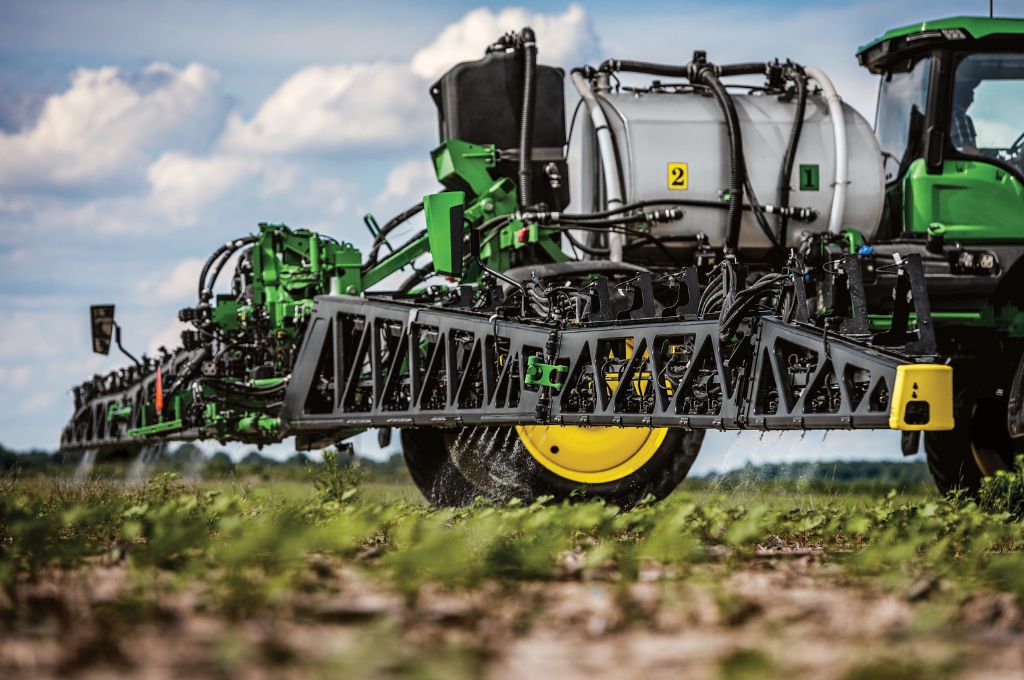
Credit: John Deere, used here under Creative Commons license CC BY 2.0. Source: https://www.flickr.com/photos/32295574@N05/52201229970
Natural Language Processing (NLP)
NLP software enables computers to understand texts and spoken words, and to extract information. This type of AI allows the system to make inferences based on content and relationships and therefore emulates human performance. Popular examples of NLP are digital assistants such as Apple’s Siri, voice-operated GPS systems, and customer service chatbots. Also, knowledge system construction technique (i.e., ontology) combined with NLP techniques has been developed to retrieve collected information on plant names, plant descriptions, fertilizer application levels, flowering and pruning seasons, and diseases and pests.
Example in Agriculture
A commercial example of NLP is FoodOn (http://foodon.org) (Dooley et al. 2018), a dictionary for data that can be used by both people and computers to identify relationships among food-related objects such as animals, plants, and fungi (Figure 5). This system will allow AI to have the same level of knowledge as humans about food and produce.
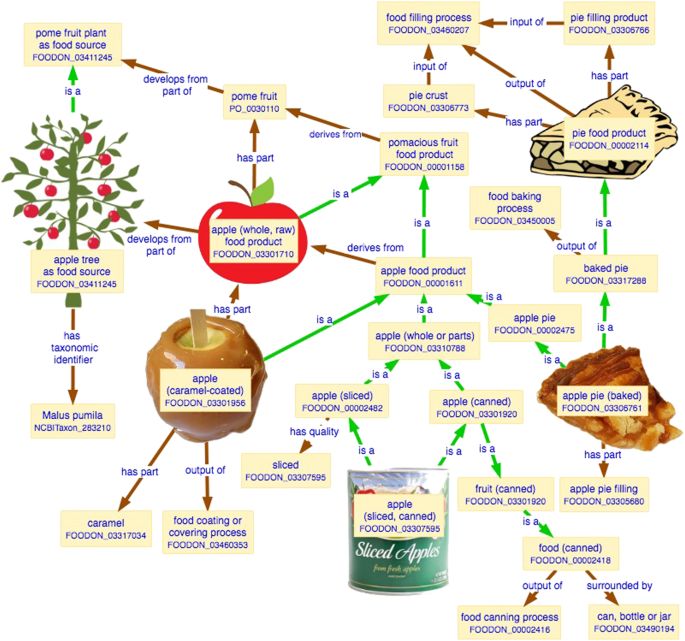
Credit: Dooly et. al (2018), used here under Creative Commons license CC BY 4.0. Source: https://www.nature.com/articles/s41538-018-0032-6
Robotics and Automation
Robotics is a field of engineering focused on developing robots to perform repetitive, dangerous, or difficult tasks. The robot itself does not necessarily need AI functionality, but AI can improve the robot’s capability significantly by making the robot more aware of its surroundings. Artificial intelligence is heavily used in robot perception and decision-making processes. Examples include office/house cleaners, serving and preparing food in restaurants, and patrolling farm areas.
Example in Agriculture
Many companies are striving to build automatic harvesting robots to pick specific types of fruit or vegetables based on their shape, size, or color. However, many of these products are still in development or not commercially released yet. A commercial example of agricultural robotics is Harvest Automation’s HV-100 (https://www.public.harvestai.com/) for material handling for the nursery and greenhouse industry (Figure 6).
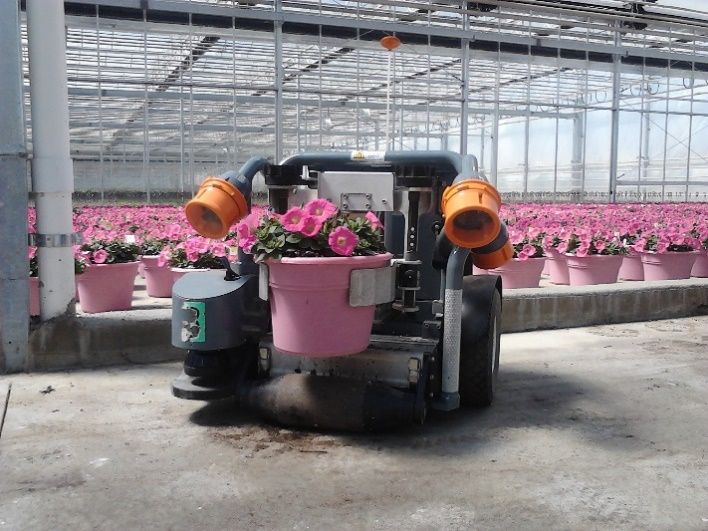
Credit: Wikimedia Commons Image uploaded by Harvest Automation
Autonomous Vehicles
Autonomous vehicles have gathered more attention in recent years. The types of vehicles for autonomous driving systems include regular passenger cars, buses, trucks, trains, ships, submarines, drones, etc. To achieve autonomous driving, AI needs to plan and execute actions, including, but not limited to, line detection, obstacle avoidance, pedestrian detection, and traffic light recognition. The AI is equipped to perform the same functions as a human driver.
Example in Agriculture
The environmental perception and hardware control for autonomous electric tractors, ground vehicles, and drones would be an example of autonomous vehicle technology in agriculture. Major agricultural machinery manufacturers have announced plans for development and sales of autonomous tractors (Figure 7).
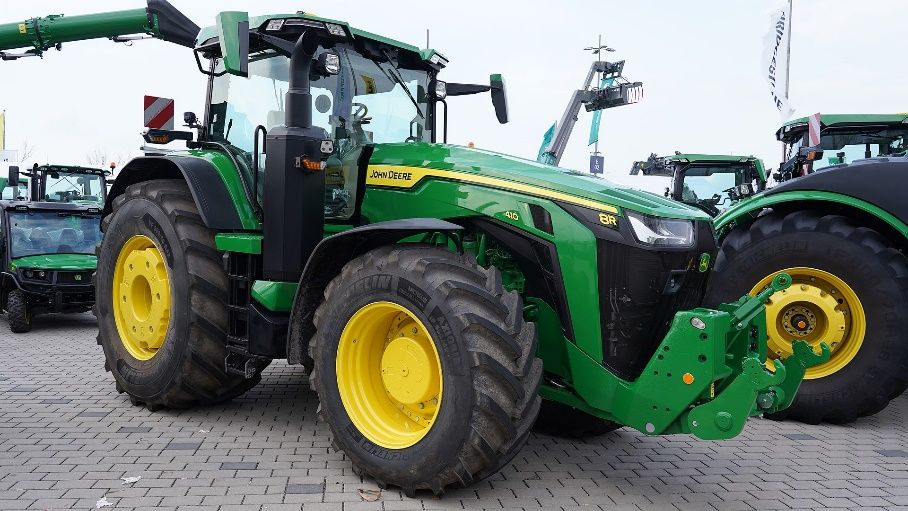
Credit: Wikimedia Commons
Summary and Final Remarks
Artificial intelligence can provide agricultural machines and robots with powerful new capabilities. AI technologies can help to reduce the need for manual labor and to increase efficiency on farms by automating certain farming tasks such as planting, weeding, irrigation, pest control, and harvesting. However, farms have different environments and requirements to grow various crops. Therefore, each agricultural AI application needs to be customized to meet unique situations. Training on new AI-capable machinery will vary depending on the application, equipment, and supplier. According to our interview with several AI product manufacturers, we expect that growers who are accustomed to big-brand manufacturers and their tractors will see familiar operational workflows with new AI capabilities added onto their systems. While initial setup and training on precision agriculture equipment may take longer compared to traditional agricultural machinery, the operational training and use may be easier because the new AI software and sensors will automate many of the processes. Growers can expect similar services as before, such as free initial training and warranties with fees for optional extended warranties, with the purchase of new equipment. However, training for smaller robotic platforms from new companies entering the market will be more varied. For example, some startups might focus on providing interactive online tutorials, while others could offer personalized on-site training sessions.
For More Information
Readers who would like to learn more about artificial intelligence in agriculture can consult Ask IFAS (https://edis.ifas.ufl.edu/topics/ai), which offers comprehensive material on the subject. The European Parliament's article, "Artificial Intelligence in the Agri-Food Sector, Applications, Risks and Impacts," provides an in-depth look at the adoption of AI technologies in Europe's agri-food sector (European Parliament 2023). In addition, "AI for Farmers?" by Nagy (2023) gives a farmer-centric perspective on integrating AI into everyday farming practices. Academic papers by Tzachor et al. (2022) and Javaid et al. (2023) offer valuable insights into the technical aspects and emerging AI technologies impacting the agricultural sector.
References
Dooley, D. M., E. J. Griffiths, G. S. Gosal, P. L. Buttigieg, R. Hoehndorf, M. C. Lange, ... and W. W. Hsiao. 2018. “FoodOn: A Harmonized Food Ontology to Increase Global Food Traceability, Quality Control and Data Integration.” npj Science of Food 2 (1): 1–10.
Edelkamp, S., and S. Schrodl. 2011. Heuristic Search: Theory and Applications. Elsevier.
European Parliament. 2023. “Artificial Intelligence in the Agri-Food Sector, Applications, Risks and Impacts.” European Parliamentary Research Service, Scientific Foresight Unit (STOA). Accessed September 1, 2023. https://www.europarl.europa.eu/stoa/en/document/EPRS_STU(2023)734711
Feldman, J. 2001. “Artificial Intelligence.” Encyclopedia of Neuroscience. 561–564.
Javaid, M., A. Haleem, I. H. Khan, and R. Suman. 2023. “Understanding the Potential Applications of Artificial Intelligence in Agriculture Sector.” Advanced Agrochem 2 (1): 15–30.
LeCun, Y., Y. Bengio, and G. Hinton. 2015. “Deep Learning.” Nature 521 (7553): 436–444.
Liao, S. H. 2005. “Expert System Methodologies and Applications—A Decade Review from 1995 to 2004.” Expert Systems with Applications 28 (1): 93–103.
Mitchell, T. M. 1997. Machine Learning 1 (9). New York: McGraw-Hill.
Nagy, S. 2023. “AI for Farmers?” N.C. Cooperative Extension, Caldwell County Center. Accessed September 1, 2023. https://caldwell.ces.ncsu.edu/2023/02/ai-for-farmers/
Tzachor, A., M. Devare, B. King, S. Avin, and S. Ó hÉigeartaigh. 2022. “Responsible artificial intelligence in agriculture requires systemic understanding of risks and externalities.” Nature Machine Intelligence 4:104–109. https://doi.org/10.1038/s42256-022-00440-4



